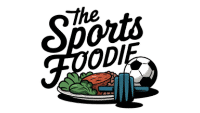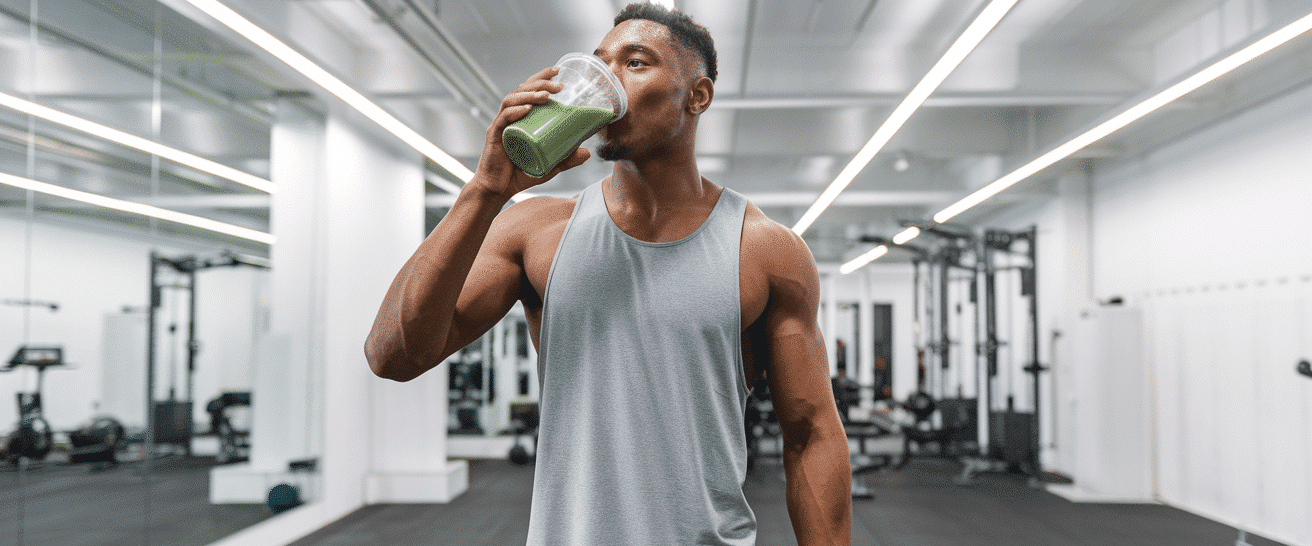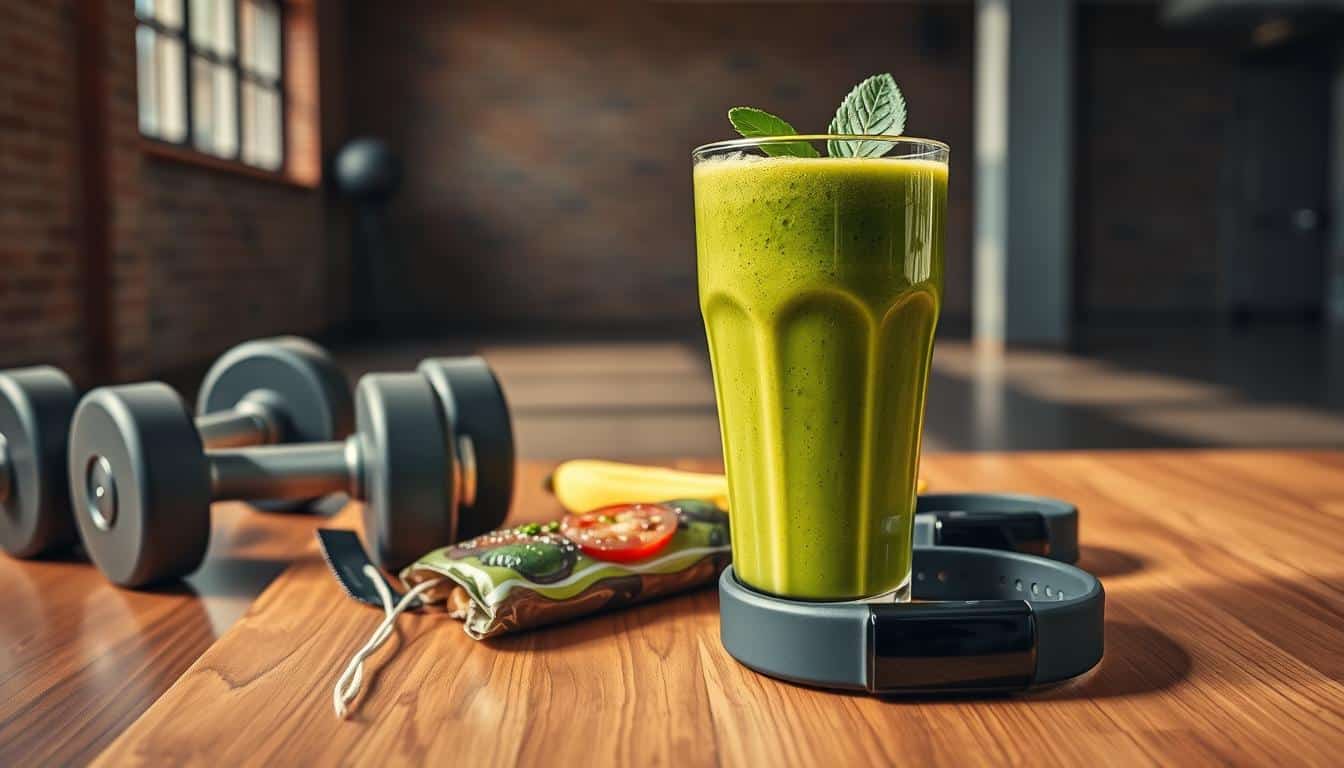What you eat before hitting the gym can make or break your session. Whether you’re looking to fuel workout energy or sustain it, the right choice matters. But with so many options, how do you decide what’s best for your body and goals?
Quick-fuel options like drinks are great for fast digestion, while solid meals provide longer-lasting energy. It all comes down to your workout type, digestion speed, and personal preferences. Some people thrive on fasted sessions, but most of us need a little boost to power through midday routines.
In this article, we’ll break down the pros and cons of each approach. You’ll learn how to choose the best pre-workout fuel for your body and goals. Let’s get started!
Introduction to Pre-Workout Nutrition
Your body is like a car—it needs the right fuel to perform at its best. Just as a car won’t run without gas, your body won’t perform well without proper nutrition. What you eat workout sessions can make a huge difference in your energy, stamina, and recovery.
Three key nutrients play a vital role in fueling your body: carbohydrates, protein, and fats. Carbs provide quick energy, protein helps repair and build muscle, and fats offer sustained energy. Balancing these nutrients ensures you’re ready to tackle any challenge.
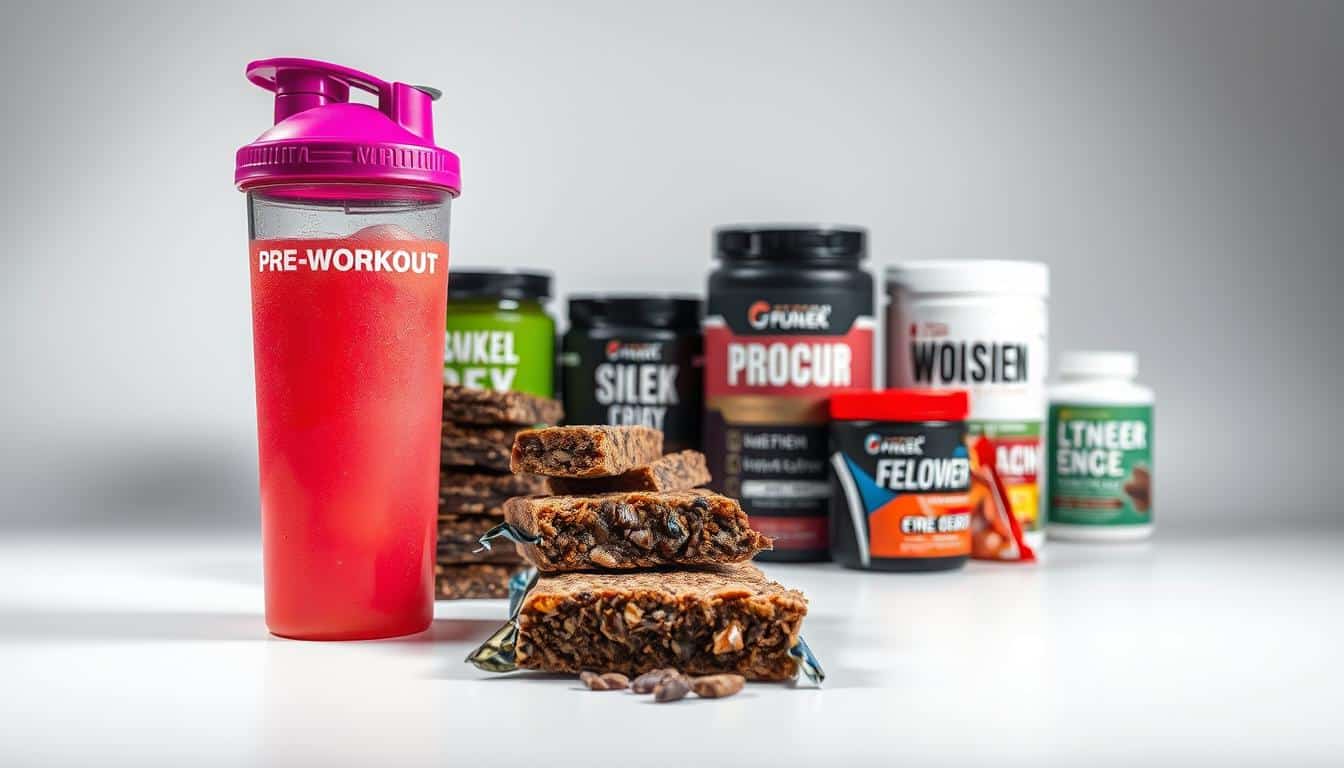
Proper fueling isn’t just about performance—it’s also about injury prevention. When your body has the nutrients it needs, you’re less likely to experience fatigue or strain. In fact, 62% of gym-goers report better stamina when they eat a pre-workout meal.
On the flip side, working out on an empty stomach can lead to muscle breakdown. Without fuel, your body may start breaking down muscle tissue for energy, which can hinder your progress. That’s why it’s essential to fuel up before hitting the gym.
| Nutrient | Role | Examples |
|---|---|---|
| Carbohydrates | Provide quick energy | Bananas, oats, rice |
| Protein | Repair and build muscle | Eggs, chicken, Greek yogurt |
| Fats | Offer sustained energy | Avocado, nuts, olive oil |
Why Pre-Workout Nutrition Matters
The right nutrition before exercise can set the tone for your entire session. It’s not just about filling your stomach—it’s about providing your body with the energy it needs to perform at its best. Without proper fueling, you risk feeling sluggish or even crashing mid-session.
Carbohydrates are your primary source of fuel, especially for high-intensity activities. They help replenish glycogen stores, which are essential for powering through tough workouts. Protein, on the other hand, helps prevent muscle breakdown during endurance training. It’s your body’s way of protecting and repairing itself.
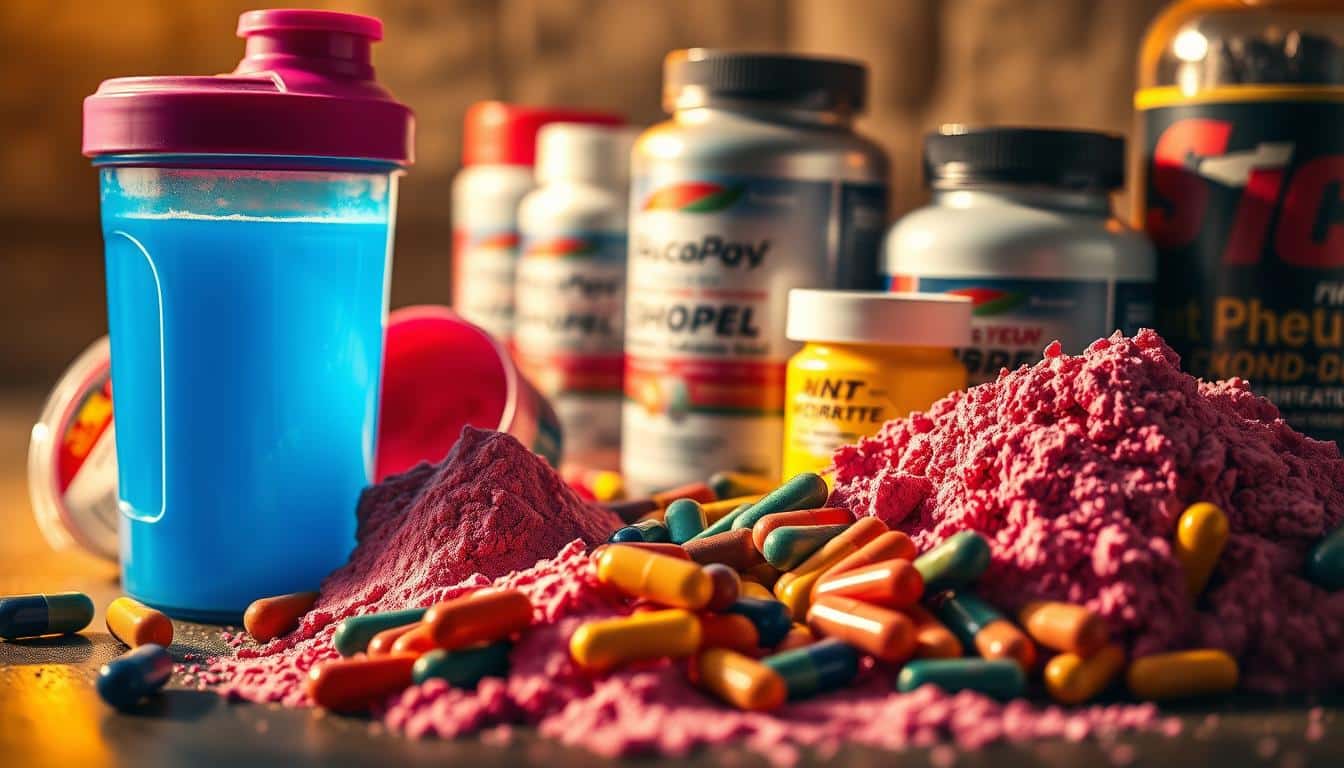
Fats play a role too, especially for low-intensity or long-duration sessions. They provide sustained energy, keeping you going when carbs run low. A study even found that athletes who ate a balanced meal before training lifted 15% heavier weights. That’s a game-changer for anyone looking to improve performance.
Don’t underestimate the importance of timing. Eating too close to your session can lead to discomfort, while skipping meals entirely can leave you drained. Find the right balance to avoid mid-workout crashes and keep your muscles fueled and ready to go.
Smoothie vs Solid Food Pre Workout: What’s Better?
Choosing the right fuel before exercise can significantly impact your performance. Whether you opt for a liquid or solid option depends on your workout type, timing, and personal preferences. Let’s break down the benefits of each to help you decide.
Benefits of Smoothies
Liquid options are ideal if you’re short on time. They’re quick to prepare and digest, making them perfect for a 30-60 minute window before your session. A blend of banana and whey protein, for example, provides a good source of carbs and protein to fuel your energy.
Since they’re in liquid form, they’re less likely to cause stomach discomfort during high-intensity activities. Plus, they’re easy to customize with ingredients like berries or almond milk for added nutrients.
Benefits of Solid Foods
Solid meals are better for longer sessions or when you need sustained energy. Oatmeal, for instance, can keep you fueled for over four hours. It’s also a good source of fiber, which helps maintain steady energy levels.
Chewing solid foods triggers faster nutrient absorption, making them a great choice for strength training. A meal like chicken and rice not only prevents hunger but also supports muscle repair and growth.
Ultimately, the best option depends on your goals and schedule. Experiment with both to find what works best for you.
Top Pre-Workout Smoothie Options
Fueling up with the right blend can make your session more effective. Whether you’re short on time or need a quick energy boost, these options are designed to help you perform at your best. Let’s dive into two great source recipes that pack a punch.
Banana and Peanut Butter Smoothie
This blend is a great source of carbs and protein, making it ideal for high-intensity workouts. Combine one banana (27g carbs) with two tablespoons of peanut butter (8g protein). Add almond milk for a lactose-free option.
Best consumed 45 minutes before activities like CrossFit or WODs, this smoothie provides quick energy without weighing you down. It’s a simple yet effective pre-workout snack that keeps you going strong.
Berry and Greek Yogurt Smoothie
Packed with antioxidants and protein, this smoothie is perfect for morning yoga or pilates. Mix one cup of berries with 150g of Greek yogurt (17g protein). Add chia seeds for an extra boost of omega-3s.
This blend is light, refreshing, and easy to digest. It’s a fantastic way to fuel up before a session that requires focus and endurance. Give it a try and feel the difference!
Top Pre-Workout Solid Food Options
Fueling your body with the right meal can transform your training session. Solid meals are perfect for sustained energy, especially during longer or intense activities. Let’s explore two good source options that can help you power through your routine.
Chicken, Rice, and Vegetables
This classic combo is a powerhouse of nutrients. Grilled chicken provides 35g of protein, while brown rice offers complex carbohydrates for steady energy. Add steamed broccoli for a boost of vitamin C, which aids in nutrient absorption.
This meal is ideal for powerlifting or strength training. Eat it 2.5 hours workout to allow proper digestion and maximize performance. It’s a balanced choice that keeps you fueled and focused.
Oatmeal with Protein Powder
Oatmeal is a fantastic option for morning sessions. Half a cup of oats delivers 27g of carbs, and adding a scoop of whey protein gives you 24g of protein. Top it with cinnamon for better blood sugar control.
This meal is perfect for marathon training or endurance activities. It’s light, easy to digest, and provides long-lasting energy. Pair it with a sweet potato for an extra nutrient boost.
Timing Your Pre-Workout Meal
Timing your meal before exercise can be the difference between a great session and a sluggish one. Eating at the right time ensures your body has the energy it needs to perform at its best. Let’s explore two key windows to fuel up effectively.
30 Minutes to 1 Hour Before
If you’re short on time, quick fuel options are your best bet. A snack like apple slices with peanut butter provides 15g of carbs and 7g of protein. It’s light, easy to digest, and perfect for high-intensity activities.
Another great option is an RXBar, which offers 12g of protein and natural sugars from dates. Avoid heavy fats before spin class, as they can slow digestion and leave you feeling sluggish.
2-3 Hours Before
For longer or more intense sessions, a full meal is ideal. A combination of salmon and wild rice delivers 40g of protein and 55g of carbs. This keeps you fueled for up to 90 minutes of strength training without hunger pangs.
Don’t forget to hydrate with 16oz of water post-meal. Proper hydration ensures your body can absorb nutrients and perform at its peak.
Key Nutrients for Pre-Workout Meals
Understanding the right nutrients can elevate your performance. What you consume before exercise plays a vital role in how you feel and perform. Let’s break down the three essential macronutrients: carbohydrates, protein, and fats.
Carbohydrates
Carbohydrates are your body’s primary energy source. They come in two forms: simple and complex. Simple carbs, like white rice, provide quick energy. Complex carbs, such as quinoa, offer fiber and B vitamins for sustained fuel.
Protein
Protein is essential for muscle repair and growth. Whey isolate is a great option for rapid absorption, while casein provides a slow release of amino acids for longer sessions. Including protein in your meal helps prevent muscle breakdown during intense workouts.
Fats
Fats are important for sustained energy, especially during low-intensity or long-duration activities. Avocado, rich in heart-healthy monounsaturated fats, is a great choice. However, limit fat intake to around 10g before exercise to avoid sluggishness.
| Nutrient | Type | Examples | Benefits |
|---|---|---|---|
| Carbohydrates | Simple | White rice | Quick energy |
| Carbohydrates | Complex | Quinoa | Sustained energy, fiber |
| Protein | Whey isolate | Protein powder | Rapid absorption |
| Protein | Casein | Cottage cheese | Slow release of amino acids |
| Fats | Monounsaturated | Avocado | Heart-healthy, sustained energy |
Balancing these nutrients ensures your body is ready to tackle any workout. Experiment with different combinations to find what works best for you.
Pre-Workout Snacks for On-the-Go
When you’re on the move, having the right snacks can keep your energy levels steady. Whether you’re rushing to the gym or heading out for a hike, portable options are essential for staying fueled. Let’s explore two simple yet effective choices that fit seamlessly into your active lifestyle.
Protein Bars
Protein bars are a convenient option for busy days. Look for bars with less than 5g of sugar and at least 15g of protein. For example, the RXBar Chocolate Sea Salt offers 12g of protein and natural sweetness from dates. It’s a great choice for maintaining steady blood sugar levels.
Avoid bars with maltitol, as it can cause stomach discomfort. Instead, opt for bars with whole ingredients like nuts seeds for added nutrients. They’re perfect for a quick boost before strength training or cardio.
Apple Slices with Peanut Butter
This classic combo is both nutritious and portable. One medium apple provides 25g of carbs, while a tablespoon of peanut butter adds healthy fats and 3.5g of fiber. Together, they offer a balanced mix of energy and satiety.
This snack is ideal for activities like hiking or climbing, where you need sustained energy. It’s easy to pack, delicious, and keeps you going strong without weighing you down.
Hydration Before a Workout
Staying hydrated is just as important as what you eat before exercise. Your body needs water to function at its best, especially during physical activity. Proper hydration ensures you have the fuel to power through your session.
Start by drinking 17-20oz of water 2-3 hours before your exercise. This gives your body enough time to absorb the fluids. Adding a pinch of salt can help maintain electrolyte balance, which is crucial for endurance.
For an extra boost, try cold brew coffee with oat milk. This combo provides 15g of carbs and a caffeine kick to enhance focus and energy. It’s a great option for those who need a little extra push before their workout.
Dehydration can lead to a 7% loss in strength, according to studies. To avoid this, check your urine color—aim for a pale lemonade shade. This simple trick ensures you’re well-hydrated and ready to perform.
Remember, hydration isn’t just about water. It’s about giving your body what it needs to thrive. Whether it’s water, electrolytes, or a coffee blend, make hydration a priority before hitting the gym.
Common Mistakes in Pre-Workout Nutrition
Getting your nutrition right before exercise can make all the difference in your performance. However, many people unknowingly make mistakes that can leave them feeling sluggish or even hinder their results. Let’s explore the most common errors and how to avoid them.
Eating Too Much or Too Little
Overeating before a session can make feel bloated and uncomfortable. A meal with 500+ calories, like a large cheesesteak, can take up to 45 minutes to digest. This delay can lead to nausea during high-intensity moves like burpees.
On the other hand, undereating can leave you dizzy by set 3. Skipping meals or consuming less than 100 calories increases cortisol levels by 28%, which can negatively impact your performance. Balance is key to fueling your body effectively.
Ignoring Nutrient Timing
Timing is everything when it comes to pre-workout nutrition. Drinking a protein shake just 10 minutes before lifting weights can cause stomach cramps. Instead, aim for a solid meal 2 hours before your session or a liquid option 30 minutes prior.
Heavy fats should also be avoided right before exercise, as they slow digestion. If you want eat something rich, like avocado toast, give yourself at least an hour to digest. This ensures your body has the energy it needs without discomfort.
| Mistake | Impact | Solution |
|---|---|---|
| Overeating | Nausea, sluggishness | Stick to 300-400 calorie meals |
| Undereating | Dizziness, fatigue | Consume at least 200 calories |
| Poor Timing | Stomach cramps, discomfort | Eat solids 2hrs out, liquids 30mins prior |
Making these mistakes can hurt your results and leave you feeling sluggish. Avoid snacks high in sugar, as they can cause energy crashes. Instead, focus on balanced meals that provide steady energy and support your goals.
How to Choose the Right Pre-Workout Meal
Finding the perfect meal before exercise can elevate your performance. The key is to tailor your choice to your specific needs. Let’s break it down step by step to help you make the best decision.
First, assess your workout type. High-intensity activities like HIIT require quick-digesting options, such as a banana smoothie. For low-intensity sessions like yoga, a light snack like almonds can give energy without weighing you down.
Next, consider your available time. If you’re short on time, a liquid option like a protein shake is a great source of nutrients. For longer sessions, a solid meal like sweet potato and turkey slices provides sustained fuel.
Don’t forget dietary restrictions. If you’re vegan or gluten-free, opt for alternatives like chia pudding or quinoa bowls. These options ensure you’re fueled without compromising your dietary needs.
Finally, track your reactions. Keep a food journal for two weeks to see how your body responds to different meals. This helps you identify what works best for your workout routine.
| Workout Type | Meal Option | Benefits |
|---|---|---|
| HIIT | Banana Smoothie | Quick energy, easy digestion |
| Strength Training | Sweet Potato + Turkey | Sustained energy, muscle repair |
| Yoga | Almonds | Light, steady energy |
By following these steps, you can find the best pre-workout meal for your needs. Experiment, track, and adjust to fuel your body effectively.
Conclusion
Your performance starts with the right fuel—choose wisely. Whether you’re aiming for speed or endurance, pairing carbs with protein in a 3:1 ratio is key to fuel body needs and support muscle growth. Test both liquid and solid options during different activities to find what works best for you.
Proper fueling isn’t just about energy—it’s also about preventing injuries. Studies show that 60% of gym-related injuries can be avoided with the right nutrition. For an extra boost, try blending spinach into your drinks for added iron.
Remember, the best pre-workout choice depends on your goals and timing. Experiment, track your results, and fuel your way to better performance!
